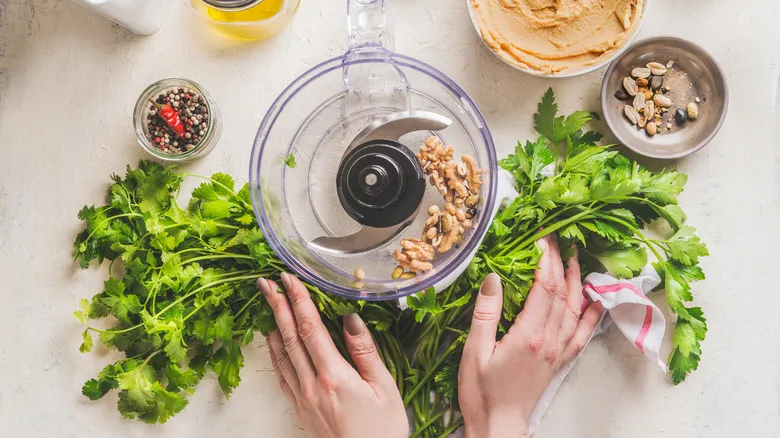Blenders have a need for speed
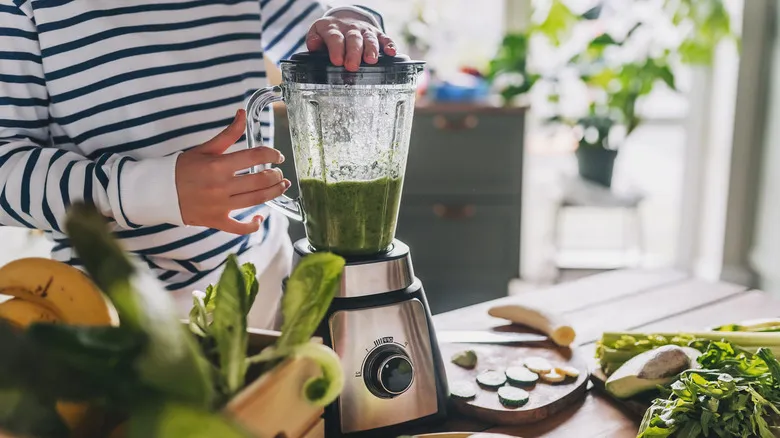
Blenders typically feature a single fixed blade positioned at the bottom of the jar. Resembling a metallic origami structure at the base of a well, the blade is designed with various angles and sharp points to effectively blend the ingredients within the container. The tall and narrow shape of the jar creates a vortex that pulls the ingredients down toward the blades. Blenders are equipped with powerful motors that enable the blades to spin rapidly, breaking down tough components and producing a smooth mixture. The high speed, particularly in powerful models like the Vitamix E-310, can make it challenging to control the rate at which the food is processed. Interestingly, a blender can even clean itself: simply fill the jar halfway with water and soap and turn it on.
Food processors, on the other hand, utilize an S-shaped blade for chopping, pureeing, and dicing. Many models, such as the Breville Sous Chef 16 Pro, come with additional blades for slicing, shredding, and kneading dough. The slower speed of a food processor allows for greater control over its operation and the desired texture of the food. The pulse function enables a stop-and-go action, allowing denser ingredients to settle at the bottom for more effective chopping and mixing. The shallower, wider bowl design facilitates easier scraping of food from the sides. However, unlike blenders, food processor containers are not designed for liquids and may leak or overflow.
If you're uncertain about which appliance to choose, a combination tool like the Cuisinart Smart Power Duet could be a versatile option to consider.
Recommended
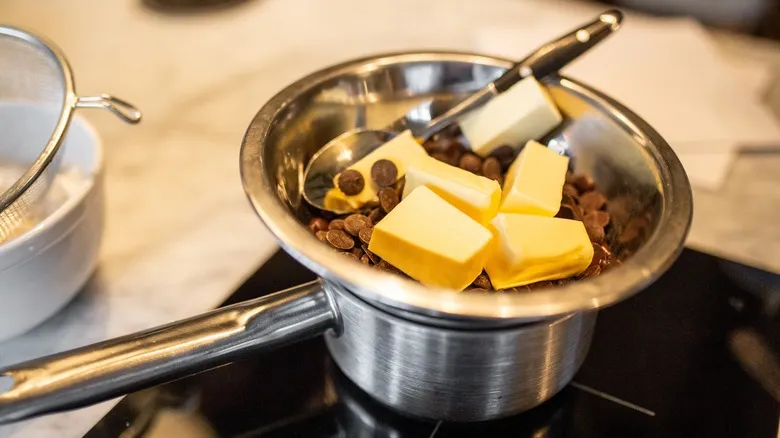
How To Choose The Right Bowl For Your Double Boiler
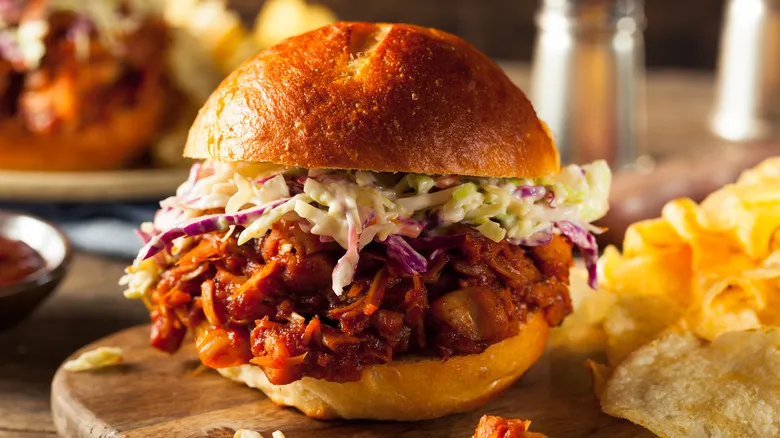
For A Meaty-Tasting Jackfruit, Break Out The Slow Cooker
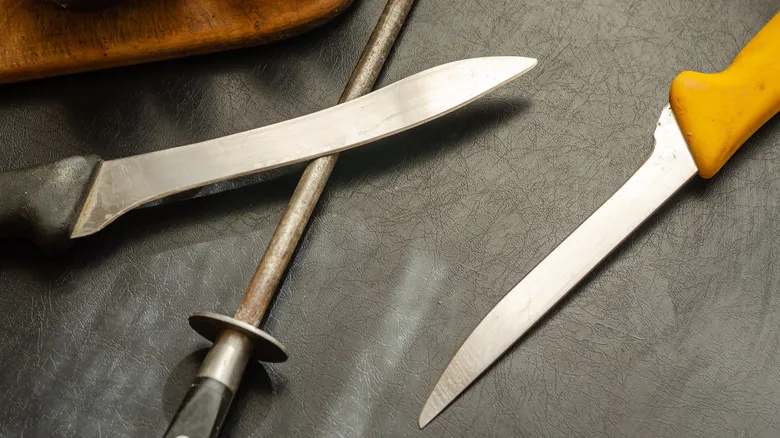
Do You Really Need A Boning Knife?
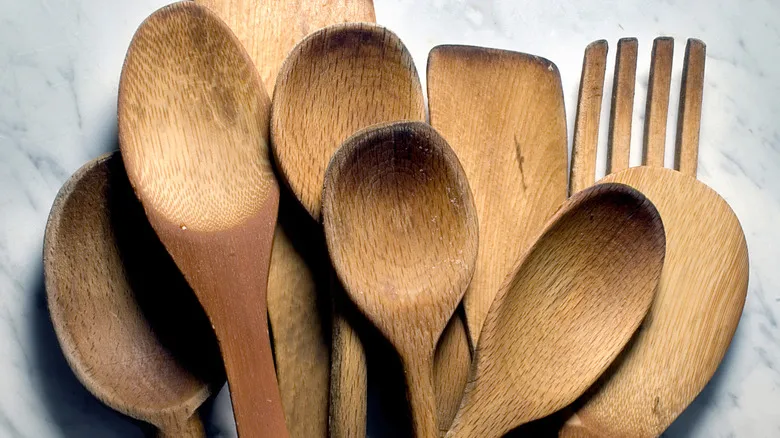
The Telltale Signs It's Time To Replace Your Wooden Spoons
Next up

